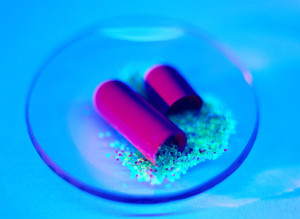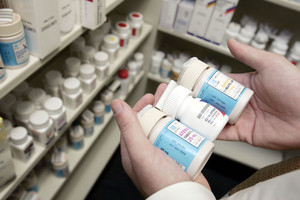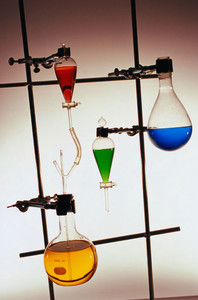As part of its ongoing efforts to provide product-specific guidance for generics makers the US Food and Drug Administration (FDA) has again released several new and revised bioequivalence documents. The agency announced on 15 May 2017 that it had released 21 new draft guidance documents and 16 revisions to guidance documents on bioequivalence requirements for the development of generics containing 33 different active ingredients.
FDA releases 37 new and revised bioequivalence guidelines for generics
Home/Guidelines
|
Posted 14/07/2017
 0
Post your comment
0
Post your comment

The new draft bioequivalence guidance documents cover generics of attention deficit hyperactivity disorder (ADHD) treatment amphetamine, antibiotic gentamicin, hepatitis C treatment sofosbuvir; velpatasvir and chronic lymphocytic leukaemia treatment venetoclax, among others, see Table 1.
Revised bioequivalence guidance documents include those for generics of anticoagulant apixaban, cancer treatment bexarotene, HIV treatment emtricitabine/tenofovir and multiple sclerosis treatment Gilenya (fingolimod), among others, see Table 2.
FDA bioequivalence requirements demand that the generic drug performs in the same way in the body and has the same active ingredient(s), strength, dosage form and route of administration as the brand-name reference drug.
Table 1: FDA new draft bioequivalence guidance documents
| Active ingredient | Route of administration | Dosage form | Link |
| Acetylcysteine | Oral | Tablet, effervescent | Click here |
| Amphetamine | Oral | Tablet, ER, OD | Click here |
| Aprepitant | Oral | Suspension | Click here |
| Azelastine hydrochloride | Nasal | Spray, metered | Click here |
| Bisacodyl/ polyethylene glycol 3350/ potassium chloride/ sodium bicarbonate/ sodium chloride | Oral | Tablet DR for solution | Click here |
| Carbidopa/ levodopa | Enteral | Suspension | Click here |
| Chlordiazepoxide hydrochloride/ clidinium bromide | Oral | Capsule | Click here |
| Clonazepam | Oral | Tablet, OD | Click here |
| Edoxaban tosylate | Oral | Tablet | Click here |
| Gentamicin sulfate | Topical | Ointment | Click here |
| Hydrocortisone butyrate | Topical | Lotion | Click here |
| Hydrocortisone | Topical | Cream | Click here |
| Linagliptin/ metformin hydrochloride | Oral | Tablet, ER | Click here |
| Lorcaserin HCl | Oral | Tablet, ER | Click here |
| Methylnaltrexone bromide | Oral | Tablet | Click here |
| Nitroglycerin | Sublingual | Powder | Click here |
| Nystatin/ triamcinolone acetonide | Topical | Cream | Click here |
| Nystatin/ triamcinolone acetonide | Topical | Ointment | Click here |
| Tetracaine hydrochloride/ oxymetazoline hydrochloride | Nasal | Spray | Click here |
| Sofosbuvir/ velpatasvir | Oral | Tablet | Click here |
| Venetoclax | Oral | Tablet | Click here |
| DR: delayed release; ER: extended release; OD: orally disintegrating. | |||
Table 2: FDA revised draft bioequivalence guidance documents
| Active ingredient | Route of administration | Dosage form | Link |
| Acamprosate Calcium | Oral | Tablet, DR | Click here |
| Apixaban | Oral | Tablet | Click here |
| Bexarotene | Oral | Capsule | Click here |
| Calcium acetate | Oral | Tablet | Click here |
| Calcium acetate | Oral | Capsule | Click here |
| Deferiprone | Oral | Tablet | Click here |
| Dolutegravir sodium | Oral | Tablet | Click here |
| Emtricitabine/ tenofovir disoproxil fumarate | Oral | Tablet | Click here |
| Fingolimod | Oral | Capsule | Click here |
| Lanthanum Carbonate | Oral | Tablet, chewable | Click here |
| Nevirapine | Oral | Tablet | Click here |
| Phenytoin | Oral | Tablet, chewable | Click here |
| Phenytoin | Oral | Suspension | Click here |
| Propafenone HCl | Oral | Capsule, ER | Click here |
| Trospium chloride | Oral | Capsule, ER | Click here |
| Trospium chloride | Oral | Tablet | Click here |
| DR: delayed release; ER: extended release. | |||
The draft guidance documents recommend what in vivo and in vitro studies generics companies should carry out in order to demonstrate bioequivalence. The number of studies, the population to be studied, blood sampling timepoints, and analytes to be measured in blood samples are also detailed in the draft guidance documents. Some of the documents also provide discussion on data formats.
FDA also has an overarching guidance document on bioequivalence recommendations for specific products [1], as well as a dissolution methods database.
Comments on the draft guidance documents can be posted to the Division of Dockets Management (DDM) under Docket FDA-2007-D-0369-0015. This can be done via the website www.regulations.gov or written comments can be mailed to DDM (HFA-305), FDA, 5630 Fishers Lane, Rm. 1061, Rockville, MD 20852, USA.
Related article
Doctors in the US should remember to prescribe generics
Reference
1. GaBI Online - Generics and Biosimilars Initiative. US guidelines for generics [www.gabionline.net]. Mol, Belgium: Pro Pharma Communications International; [cited 2017 Jul 14]. Available from: www.gabionline.net/Guidelines/US-guidelines-for-generics
Permission granted to reproduce for personal and non-commercial use only. All other reproduction, copy or reprinting of all or part of any ‘Content’ found on this website is strictly prohibited without the prior consent of the publisher. Contact the publisher to obtain permission before redistributing.
Copyright – Unless otherwise stated all contents of this website are © 2017 Pro Pharma Communications International. All Rights Reserved.
Source: US FDA
Policies & Legislation
Strategic plans of ANVISA and COFEPRIS to advance health regulation
Panama enacts new bill to guarantees the supply of medicines
Reports
Follow-on biological/biosimilar approvals in Latin America by therapeutic class
Follow-on biological/biosimilar approvals landscape in Latin America
Most viewed articles
The best selling biotechnology drugs of 2008: the next biosimilars targets
Global biosimilars guideline development – EGA’s perspective
Related content
New decree for the prescription and commercialization of medicines in Argentina
FDA issues draft guidance on biosimilars and interchangeable biosimilars labelling
WHO’s revised guideline to safe and effective biosimilar products
New FDA guidance on statistical approaches to establishing bioequivalence
New decree for the prescription and commercialization of medicines in Argentina

Home/Guidelines Posted 11/03/2024
FDA issues draft guidance on biosimilars and interchangeable biosimilars labelling

Home/Guidelines Posted 22/09/2023
New FDA guidance on statistical approaches to establishing bioequivalence

Home/Guidelines Posted 20/01/2023
The best selling biotechnology drugs of 2008: the next biosimilars targets







Post your comment